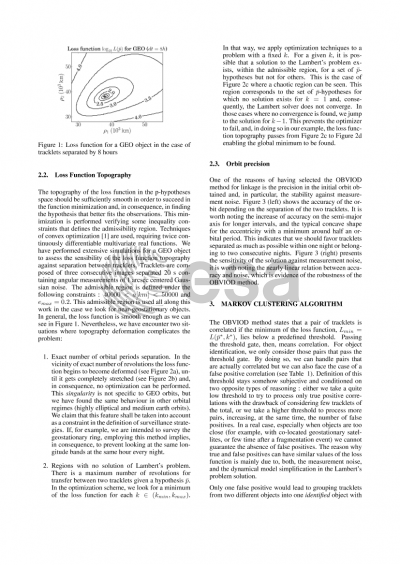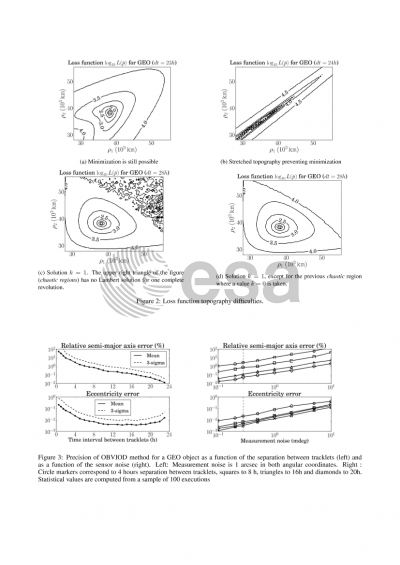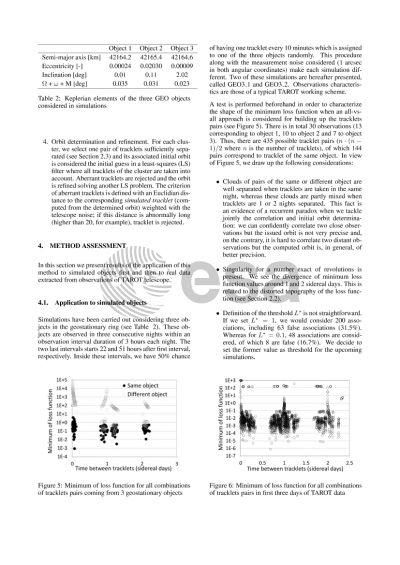Document details

Abstract
One of the main missions of Space Surveillance is the detection and cataloguing of space objects. Maintenance of this catalogue is fundamental in order to enable the database to be used, among others, for collision risk assessment and reentry analysis. This maintenance comprises a twofold task. On one hand, it is necessary to keep track of known objects and reduce the uncertainty on their state vector. On the other hand, catalogue is expected to be enriched with either objects that were not identified up to then or with new objects coming from fragmentations (collisions or explosions). Tackling the latter problem is the scope of this paper.
Association of uncorrelated tracks (UCTs) and initial orbit determination is essential in the cataloguing task and, for this reason, it has been the object of intense research in recent years. Siminski et al [1] have developed a method based on a boundary value formulation. It uses the solution of the Lambert’s problem to calculate orbit candidates which are then discriminated comparing angular rates by means of a Mahalanobis distance (the loss function to be minimized). One of the advantages of this Optimized Boundary Value Initial Orbit Determination (OBVIOD) method compared to others is a less sensitivity in orbit accuracy with respect to measurements noise. We can then apply this method to new objects identification [2] in order to give a score to each possible combination of two tracklets based on the loss function, and those pairs with a score below a predefined threshold are filtered out as a true association. However, we cannot guarantee the absence of false associations among the filtered pairs. These false associations, usually coming from observations of close objects, will prevent the correct distinction between objects and, in this way, a synthetic object generated from observations of several real objects will come up from computations with a high risk of not being able to correlate to future observations. Novelty of the present work consists in introducing the notion of graph to store the correlation relationships and applying to this graph the Markov clustering algorithm to tackle the problem of false associations. This approach leads to a more robust distinction between
different objects observed, specially the clustered ones.
Performance of this approach is investigated by means of simulated observations concerning objects in three orbital regime cases: GEO, MEO and GTO. This work includes analysis on the accuracy of the estimated orbit, observation residuals and association goodness-of-fit. Moreover, an analysis is presented processing a real set of optical measurements taken by French TAROT-Chile telescope that comprises a sky region where a cluster of three collocated geostationary satellites are orbiting. All the analysis and results presented in this paper have been performed using BAS3E, the CNES tool which simulates a whole space surveillance system.
[1] J. A. Siminski et al. Short-arc tracklet association for geostationary objects. Advances in Space Research 53 (2014) 1184-1194
[2] M. Weigel, M.Meinel and H. Fiedler. Processing of optical telescope observations with the space object catalogue BACARDI. 25th International Symposium on Space Flight Dynamics ISSFD (2015)
Preview









